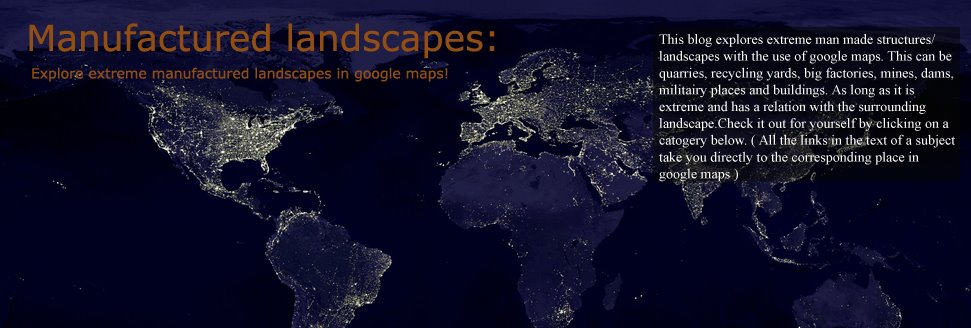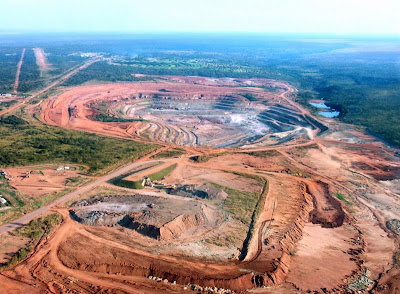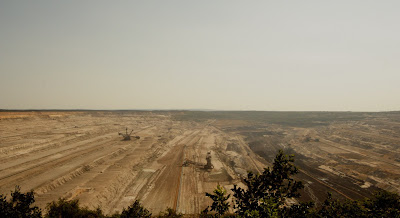Marble quarries
Marble quarries:
Marble is a metamorphic rock resulting from the recrystallization of limestone. Heat and pressure over time cause the carbonate minerals to recrystallize into an interlocking mosaic of crystals, the different colours due to the various mineral impurities such as clay, silt and sand.
One of the biggest marble quarries in the world is found in Carrara in Italy. This little town is famous for it's marble quarries in the nearby mountains. Carrara marble has been used since the time of Ancient Rome; the Pantheon and Trajan's Column in Rome are constructed of it, and many sculptures of the Renaissance, such as Michelangelo's David, were carved from Carrara marble. There are a lot of seperate quarries which together form an impressive landscape:
Another region with huge quarries is the Evora province in Portugal. Here near the village of Estremoz for example a very deep marble quarry is situated:
Further to the South East the The Rosa Portugal marble quarries are situated. This is the biggest marble production area in the world. There are at least 50 marble quarries in this area of this type:
In Rajasthan near the town of Makrana in India another huge Marble production "centre" is located. Around this town 500 marble quarries can be found. These marble quarries have an elongated shape. And if you would count them as one then the quarries stretch for 12.5 kilometers at certain points. For example here the quarries begin in the Northern part of Makrana and they end here 12.5 kilometers to the south. The world famous monument The Taj Mahal was made of marble coming from these quarries:

























































